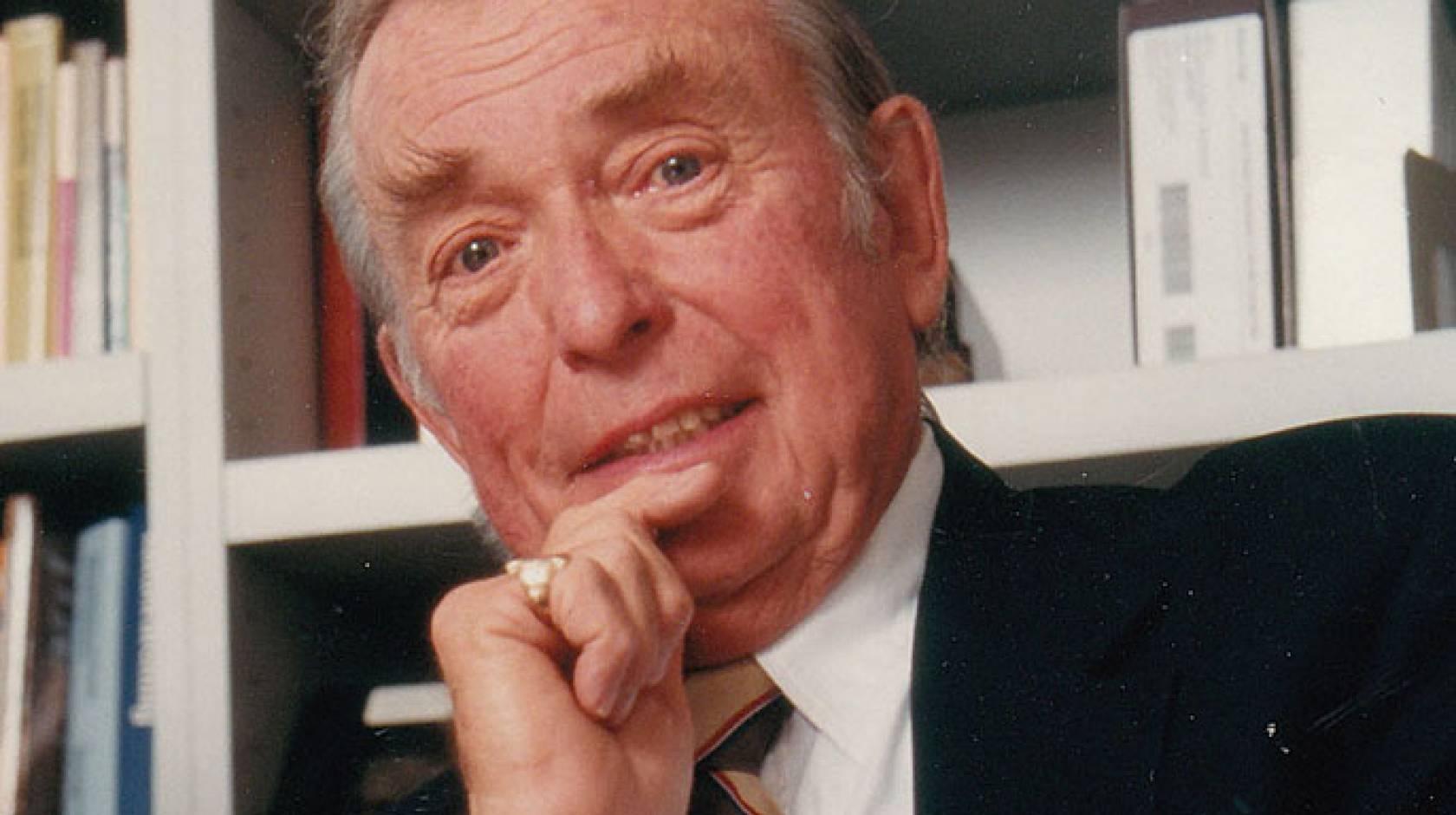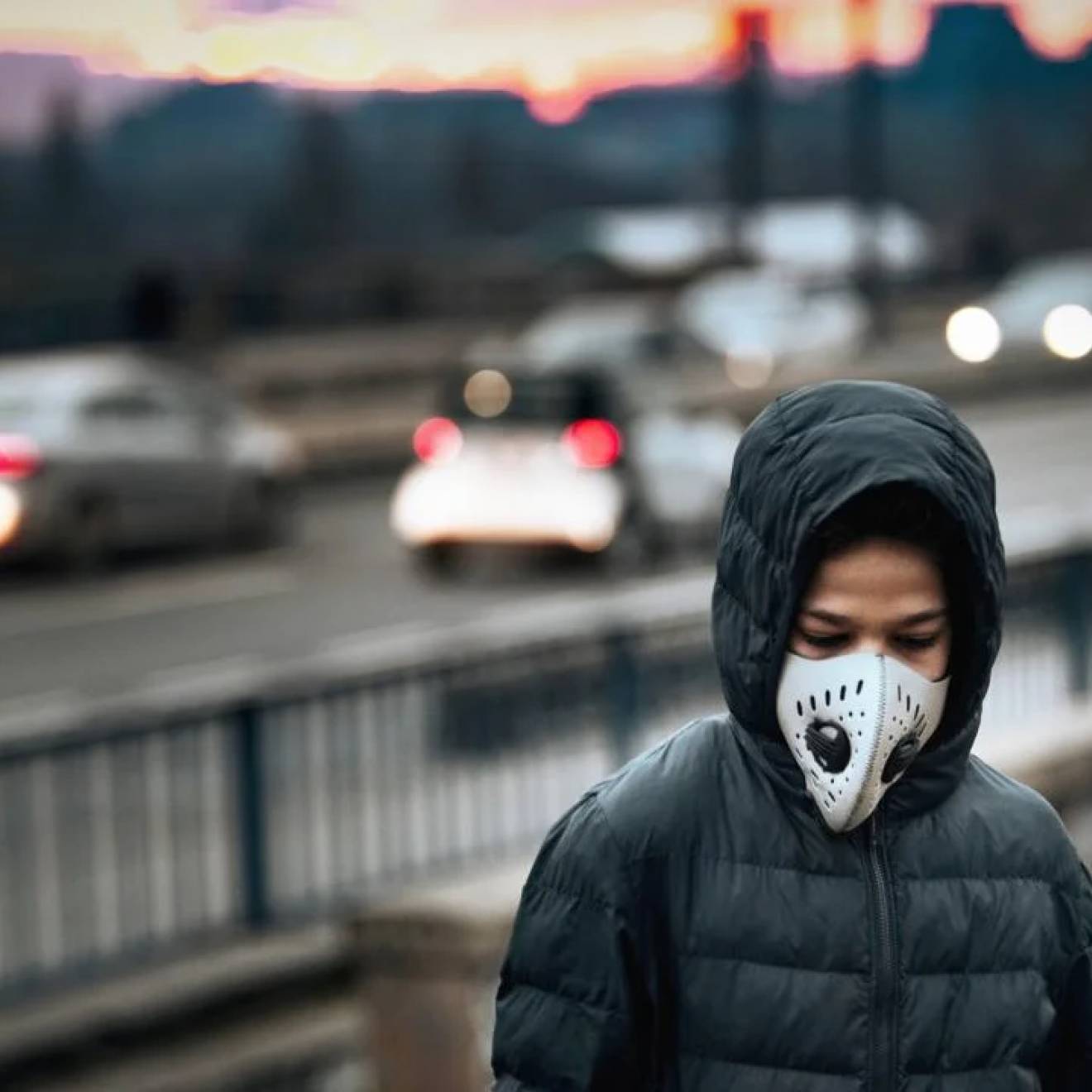Janet Wilson, UC Irvine

James Pitts, a University of California researcher who helped uncover the dangers of air pollution blanketing greater Los Angeles and who worked tirelessly to clear the air worldwide, has died. Pitts, 93, died of natural causes in his sleep today at his Irvine home, said his wife and fellow chemist, UC Irvine professor Barbara Finlayson-Pitts.
“Jim was universally known as an energetic, brilliant, charming and loving man with an unrelenting commitment to improving our environment,” Finlayson-Pitts said. “He treated everyone up and down the food chain — from the janitor to governors — with the same respect and interest.”
The research carried out by Pitts and his team provided much of the scientific basis for California’s ground-breaking pollution policies and regulations, which were subsequently adopted both nationally and internationally and which led to the dramatic improvement in air quality enjoyed today.
“Jim Pitts was the giant redwood of California air pollution science,” said California Air Resources Board Chair Mary Nichols. “From his smog chamber at UC Riverside he designed studies that illuminated the workings of the atmosphere of Southern California that paved the way for our successful battle for clean air. He was an effective teacher and persistent advocate for sound academic research in public policy.”
James N. Pitts Jr. was born in Salt Lake City on Jan. 10, 1921, to Esther (Bengtson) and James N. Pitts. The family moved when he was 6 months old to West Los Angeles, near Baldwin Hills. In the 1930s, the young Pitts took a streetcar daily to Manual Arts High School, where he fell in love with chemistry via his 11th-grade science teacher. He began college at UCLA before being asked to join a secret chemical warfare unit during World War II. Working on Isla San Juan off the coast of Panama, he wore a gas mask — and herded goats also wearing the masks, which were being developed to protect Allied troops in the battlefield.
Charcoal was a key ingredient in the masks, and Pitts later recalled, “My job was to sieve the coal for the Ph.D.s. I went home from head to toe covered in coal dust every night. … I decided there and then that if I were to stay in chemistry, I would get a Ph.D. and tell others what to do!” After the war, he finished his B.S. and earned his Ph.D. at UCLA. He also co-starred on one of the first science shows on Los Angeles television.
In 1954, Pitts became a founding professor at UC Riverside, focused on fundamental photochemistry. With thick smog covering the Los Angeles Basin, he tackled the new field of air pollution, which was beginning to be understood as a photochemical reaction of sunlight, tailpipe exhaust and other factors. He remembered then-Los Angeles County Supervisor Kenneth Hahn telling automakers they needed to do something about harmful tailpipe exhaust. They refused, saying it quickly dissipated and posed no risk.
Pitts and others began tracking parts per billion of dangerous pollutants, how they lingered and the disease they could cause, which helped lead to smog alerts and then effective regulations and cleanup.
“Starting in the 1960s and going into the 1970s, when [hazardous] levels (200 ppb) were reached, all outdoor activities of K-12 students were cancelled. Students had to stay indoors until late in the afternoon or evening when the ozone levels dropped,” he related in a 2007 interview with Bowling Green State University. “In some parts of Southern California, there were over 100 days per year when such alerts were called. Today, there are … one or two per year. Controls work!”
Pitts led efforts to establish the Statewide Air Pollution Research Center at UC Riverside and served as its director for 18 years. During his tenure, it became internationally renowned. His team built the first smog chamber and did landmark studies on ozone and other oxidants, volatile organic compounds, fine particles and other hazardous pollutants, including carcinogens and widely used pesticides. The center’s policy was to accept no private donations, only public funds “with no strings attached.” It was widely recognized as an independent source of scientific advice, with visits by scientists from around the world and politicians of all persuasions — Ronald Reagan and George McGovern among them.
At one point, Pitts was desperate for $25,000 to set up a simulated “sun” in his lab to recreate the ozone photosynthesis that forms smog and conduct other critical experiments. Then-Secretary of State Jerry Brown somehow got word. He phoned the chemist and said, “Hi, Dr. Pitts. I’m Jerry Brown. I just successfully concluded a case against several oil companies [for election law violations] and have a check in my hands for a $25,000 fine. Could you use it?” The sun simulator purchased with those funds was still being utilized in experiments more than three decades later.
There are few atmospheric problems recognized today that do not have Pitts’ early fingerprints on them. He co-authored 380 scientific publications and four books — two on atmospheric chemistry with Finlayson-Pitts, his second wife, that are used worldwide in training future air quality scientists. He was listed among the most highly cited researchers by the Institute for Scientific Information. Pitts’ scientific perception and enthusiasm inspired several generations of young scientists.
He said his lifelong philosophy was based on something his favorite college chemistry professor, fellow air pollution pioneer F.E. Blacet, wrote to him: “Theories come and theories go, but good data stand forever.”
But Pitts didn’t want to just collect data; he wanted it to be used. He was always willing to testify before state and federal legislative bodies on the science of air pollution and to advise a variety of stakeholders. Pitts served on panels at the California Air Resources Board. He had a firm policy of not accepting consultancies or industry support that would even hint at bias in his translation of science into public policy.
He was recognized with many awards, including from Congress and the California Assembly, the South Coast Air Quality Management District, the state air board and the Coalition for Clean Air. He was awarded an M.A. degree from Oxford, was a 1961 Guggenheim Fellow at University College and in 1965 was a Research Fellow and undergraduate tutor at Merton College.
In 1994, he joined Finlayson-Pitts at UC Irvine where, as research scientist, he mentored at all levels, from professors to undergraduates.
“Jim Pitts was a pioneer in clearing the air of Southern California and keeping it clean, and it has been an honor to get to know him over the past 20 years,” said UC Irvine School of Physical Sciences Dean Kenneth Janda.
“Our department was incredibly fortunate to have Jim among us for more than 20 years – he was a mentor and friend to many of us – myself included,” said Reginald Penner, UC Irvine Department of Chemistry chairman and Chancellor’s Professor of Chemistry. “One could hardly have a discussion with Jim without having him express excitement for your work — and remarkably, he was always up to speed on the details. This always meant a lot to me coming from Jim — because he was a world-class atmospheric scientist His advice, encouragement, enthusiasm, and unqualified support propelled us onward and upward. … We’ll miss his big smile, the fantastic and humorous stories, and most of all, his friendship.”
Pitts said the outdoors was his true love. “For example, body surfing at the local beaches, and fly fishing for trout while camping in the High Sierra with my mother and dad and buddies in the late 1920s to late 1930s. I could really ‘dig’ nature and the charms of our environment before the mass migration of humans into our pristine areas of Southern California at the onset of World War II.”
Later in life, he played tennis and chartered deep-sea fishing trips; neighbors would anticipate his return as they knew fresh fish would be generously shared. He and Finlayson-Pitts were “parents” to golden retrievers and a Labrador retriever. At their second home in Fawnskin, they enjoyed photographing bald eagles, exploring the mountains and desert, and gathering with friends and family.
“He would light up a room, and in a short time know everyone’s personal stories. He will be very deeply missed by me — his wife/co-worker/coauthor/fishing buddy — by his black Labrador, Major, and by the rest of his family,” said Finlayson-Pitts.
Pitts is also survived by his daughters, Linda Lee, Christie Hoffman and Beckie St. George; his ex-wife, Nancy; six grandchildren; and their families.

